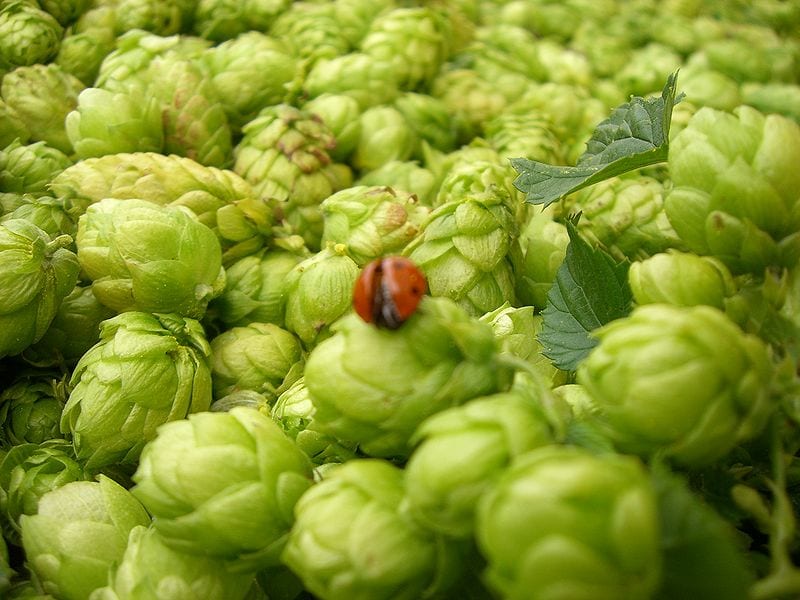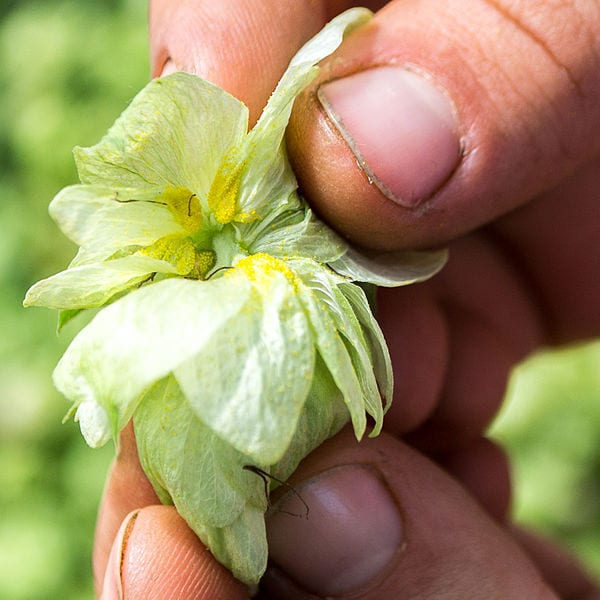Sitting at the bar of Creature Comforts, sipping on one of their many hop-forward beers, many of us never think about the ingredients that go into some of our favorite beverages. Dry-Hopped, Wet-Hopped, Mosaic, Citra, Cascade, Centennial, IBU, alpha acids, and lupulin are some of the terms you may have seen on your favorite beer bottles; but what do these terms mean and what do they have to do with the cold one you're hopefully quaffing on while you read this?
I think Asheville Brewing Company summarized the brewing process best with their Daft Punk Technologic parody: “Mill it, mash it, boil it, hop it, whirl it, pitch it, cool-ferment it…†We milled it, mashed it, and boiled it in the last two Science of Beer blogs on water and grain, now let's hop it.

Hops, one of the four major ingredients of beer, have become big business in the modern brewing process. These little green cones contain dozens of compounds responsible for the bitterness, aroma, and preservation of beer. Hops come in multiple forms for the brewing process: whole cones (pictured above), pellets, and more recently hop extracts.
There are seven primary flavors and aromas hops provide in beer: floral, fruity, citrus, herbal, earthy, piney, and spicy. These flavors often balance the sweetness provided by malt. The chemistry of hop functionality in beer is complex, but can be simplified down to the timing of hop additions in the brewing process. Added early in the boiling step, hops provide greater bitterness due to the isomerization of alpha acids, leading to a higher IBU. Alpha acids are found in the lupulin glands of hop cones. When heated, they become much more bitter in taste. Added closer to the end of the boil, hops provide stronger aroma due to beta acids and essential oils. Where beta acids really matter is in long-term beer storage. The more beta acids present in a beer when it is packaged, the more bitterness will be perceived over time as beta acids isomerize much slower than alpha acids. Most hop aroma comes from essential oils known as terpenes. These terpenes are what provide that citrusy, piney, herbal deliciousness to your favorite hoppy libations. Modern brewers have even taken to adding hops during fermentation or directly to the finished beer (called dry-hopping) to maximize the aromas provided by the hops.

Modern American IPA styles, such as the hazy New England Style IPA, have recently become all the rage and for good reason. This style has a pronounced citrus aroma and minimal bitterness despite the absurd amount of hops used. In breweries like Creature Comforts, where many of their core, seasonal, and one-off beers are hop-forward, the cost of these hop-heavy styles can get expensive quickly. Many craft breweries and even Big Beer turn to hop contractors to provide them with the vast amount of hops they need to brew beer at larger scales. Farmers work with hop contractors to sell their crop each year and hop contractors work with breweries to provide them the hops they'll need. This two-step system keeps hops at wholesale prices. However, the price of hops has increased in recent years due to climate change.
Climate change began affecting the beer industry in 2007. Brewers faced the worst shortage of hops in the history of brewing thanks to droughts continuing into 2008, 2009, 2016, and 2017. Breweries around the world began competing with each other to obtain hops. Many craft brewers began to get creative and use experimental hop varieties. Some of the newest and most exciting hop varieties came out of South Africa, providing flavors and aromas of passionfruit, guava, tropical punch, and more… but Big Beer had other plans. AB-InBev swooped in and bought every single hop from the country in an attempt to provide their “craft†division with a supply of experimental hops and to keep their true craft beer competitors from being able to experiment with new and exciting flavors.
American craft breweries turned to academia and American hop breeders to feed their creativity and boy did they deliver! We now have hop varieties such as ‘Cashmere' providing aromas of tropical coconut, peach and tangerine and flavors of coconut, melon, tangerine and lemongrass, and the much more common ‘Mosaic', which has become a staple in the craft beer world providing an extremely complex flavor that needs to be tasted to be fully understood. Universities partnered with the Brewers Association, local brewers, and the USDA developing hop breeding programs producing some of the craft beer industry's go-to hop varieties. Innovation due to shortage has led to an explosion of new beer styles and flavors throughout the history of beer. So drink up, beer fans, and tune in for the next part of the science of beer series on yeast and the science of fermentation.
 Mason McNair is studying speciation, hybridization, and evolution of pitcher plants in the Leebens-Mack lab. He enjoys teaching, most nerdy thing (video games, anime, board games), and brewing beer and cider. More from Mason McNair.
Mason McNair is studying speciation, hybridization, and evolution of pitcher plants in the Leebens-Mack lab. He enjoys teaching, most nerdy thing (video games, anime, board games), and brewing beer and cider. More from Mason McNair.
About the Author
- athenssciencecafehttps://athensscienceobserver.com/author/athenssciencecafe/April 17, 2020
- athenssciencecafehttps://athensscienceobserver.com/author/athenssciencecafe/April 12, 2020
- athenssciencecafehttps://athensscienceobserver.com/author/athenssciencecafe/April 3, 2020
- athenssciencecafehttps://athensscienceobserver.com/author/athenssciencecafe/March 30, 2020







